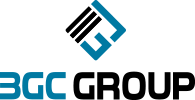COBIT vs TOGAF – Which One Is Better in 2025?
- Karl Aguilar
- Sep 4
- 2 min read

In today’s complex IT landscape, businesses have access to a wide array of frameworks that help streamline operations, reduce costs, and maximize efficiency. Among these, COBIT and TOGAF stand out as two of the most recognized and widely adopted frameworks. While often discussed interchangeably, each serves a distinct purpose. So—what do they offer, and which is the right fit for your organization in 2025?
What Is COBIT?
COBIT stands for Control Objectives for Information and Related Technologies. It’s a governance framework that helps organizations gain greater control over their information systems and technology. One of COBIT’s strengths is its versatility—it can be applied across a broad range of industries, including those not traditionally focused on IT.
COBIT focuses on five key domains:
Planning and Organization
Architecture
Governance
Risk Management
Performance Management
Each domain includes specific objectives designed to help organizations assess their current state and define a roadmap toward improvement and alignment with strategic goals.
What Is TOGAF?
TOGAF, or The Open Group Architecture Framework, is centered around enterprise IT architecture. It provides a comprehensive methodology for designing, planning, implementing, and governing an enterprise information architecture.
TOGAF is guided by 21 high-level architectural principles that serve as best practices for aligning IT infrastructure with business objectives. Each principle is structured with four key components:
A clear statement of the principle
The rationale behind it
How it benefits the business
Guidance on implementation
Its modular nature allows TOGAF to offer flexibility and scalability across industries and IT environments.
COBIT vs TOGAF: Key Differences
While both frameworks aim to enhance IT efficiency and governance, their core focus and approach differ significantly:
Feature | COBIT | TOGAF |
Primary Focus | Governance, compliance, and strategic IT control | IT architecture design and optimization |
Approach | Top-down: Start with desired outcomes and work backward | Bottom-up: Begin with the current state and build toward goals |
Core Objective | Align IT with organizational strategy while managing risk and performance | Create a structured, error-minimized IT architecture that meets business needs |
Can COBIT and TOGAF Work Together?
Absolutely.
Despite their differences, COBIT and TOGAF are not mutually exclusive—they’re complementary. Both are open standards developed through global collaboration, which makes them highly adaptable and interoperable.
In real-world scenarios:
COBIT is often used to ensure that an organization’s IT systems are governed, compliant, and strategically aligned.
TOGAF is leveraged to design and maintain the IT architecture that enables these objectives.
When used together, TOGAF provides the “how” in designing systems, while COBIT ensures the “why” and “who” in governing those systems.
Final Thoughts
Choosing between COBIT and TOGAF in 2025 doesn’t have to be an either/or decision. The choice depends on your organization’s maturity, goals, and current IT state:
Need robust governance and risk control? Start with COBIT.
Looking to build or optimize your IT architecture? Lean into TOGAF.
Want a scalable, compliant, and future-ready IT ecosystem? Consider using both in tandem.
In the rapidly evolving digital landscape, integrating the strengths of both frameworks can empower organizations to build resilient, efficient, and strategic IT infrastructures that drive real business results.








Comments